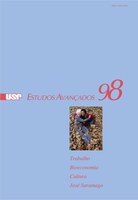Dinâmica climática e biogeográfica do Brasil no Último Máximo Glacial: o estado da arte
DOI:
https://doi.org/10.1590/s0103-4014.2020.3498.012Keywords:
Phytogeography, Amazon refuge hypothesis, Pleistocene arc hypothesis, Climate changes, Last glaciationAbstract
From the mid-20th century onwards, there has been significant growing interest in understanding the dynamics of vegetation in response to the climatic changes of the Last Glacial Maximum (LGM, 18 thousand years ago). In this context, landscapes may be the result of recent environmental changes or relics from even more remote times, and this may even determine the degree of their complexity and diversification. Since the 1960s, several researchers have proposed models to explain the coverage of Brazil’s vegetation under the LGM, but the recent advance of global climate models has provided new perspectives for a more faithful reconstruction of the past conditions. We also discuss biogeographic theories formulated and modified over the last 60 years of studies on the reconstruction of Brazilian vegetation of the LGM.
Downloads
Downloads
Published
Issue
Section
License
Estudos Avançados não celebra contrato de cessão de direitos autorais com seus colaboradores, razão pela qual não detém os direitos autorais dos artigos publicados. Os interessados em reproduzir artigos publicados na revista devem necessariamente obter o consentimento do autor e atribuir devidamente os créditos ao periódico.


